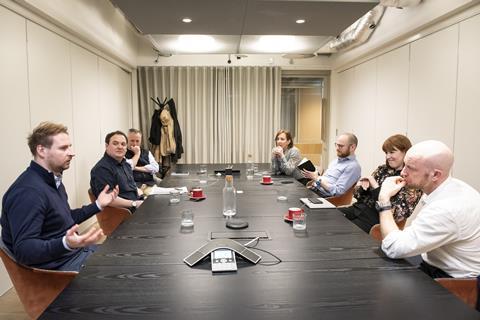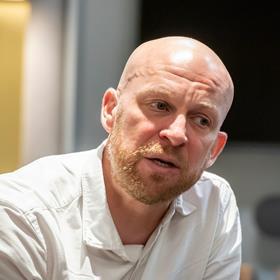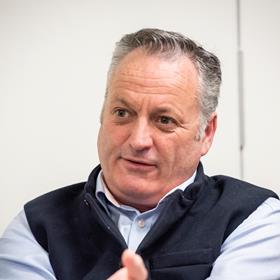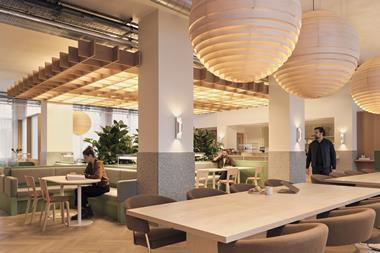Yardi recently brought together a panel of flexible workspace experts to discuss what steps operators are taking to meet the changing needs of occupiers as we emerge from the pandemic.

Panel of experts
Jules Barker, global director of product, WiredScore
Niki Fuchs, managing director, Office Space in Town
Natasha Morris, office product lead, Landsec and Myo
Paul Orrock, regional manager, Yardi
John Williams, chief marketing officer (global), The Instant Group
Jack Williamson, head of UK, Workthere
Simon Creasey (chair), Property Week






Has demand for flexible workspace bounced back to pre-pandemic levels yet? Also, what has happened to desk rates and incentives being offered by operators?
Fuchs: What we’re hearing from our competitors and other people in the industry, and what we’re seeing ourselves, is we’re now back up at pre-pandemic [desk] rates. We obviously did a huge amount of discounting during the pandemic, but we don’t need to discount anymore, so desk rates are back up to where they were, and I’m sure in some areas they’ve probably topped over
Williams: In the regions they’ve very healthily gone up and in the suburbs, too. So those markets, I would say, are above pre-pandemic levels. London was bubbly before the pandemic. It reached record highs in the winter of 2019, which feels like a million years ago, so there was a need for a slight pause in the market anyway and the pandemic provided that pause.
If you look at some of the London markets like Southwark or the West End and you’ve got a requirement for 50 or 100 desks, then good luck. There is no flex space because demand has reached such high levels. The City is a different story, though.
Williamson: There are a lot of options in the City at the minute. I was on a tour recently looking at [fully flex] space and the discount ranged from 6% and 31% across five different buildings. There’s optionality in the City, but if I had that same requirement in the West End, good luck finding five options to start with and then good luck getting a discount.
Orrock: We are seeing strong demand in zones two and three and outside the M25. We are also seeing enormous activity in places like Leeds, Birmingham, Manchester and Newcastle. Even in Scotland the market is starting to expand exponentially.
What sort of occupiers is that demand coming from? There have been lots of stories recently about large corporates like Currys taking space in flexible workspace. Is this a trend you’ve also detected and what impact might the presence of these larger ‘enterprise’ occupiers have on the way flex space is designed?
Williamson: Yes, it’s definitely a trend. You’re still seeing those high growth customers that are going from 2,000 sq ft to 12,000 sq ft taking space, and then in two years time, they’re probably going to need 30,000 sq ft or 50,000 sq ft. But then you’re also seeing those more stable businesses that know what their headcount is going to be for the next two or three years, who want more flexibility. They’re not now thinking ‘we’ve got four walls, we’ve got 100 desks and people will come because they’ve got to come, there’s no other choice’. Now they’ve got to think ‘we’ve got four walls, but we might only want 50 desks and we also need some sofas and some breakout areas and some phone booths, because people are using the space differently’.
I would say 60% to 70% of the people who walk through our door want to know some aspect of our ESG [policy]
Niki Fuchs
Morris: What we have seen a trend of is people taking space that is smaller than they need and then they are using our amenity so they don’t have to provide it or manage it themselves.
What about ESG? Is it something occupiers of flex space care about and are they interested in the ESG credentials of flex operators?
Fuchs: I would say 60% to 70% of the people who walk through our door want to know some aspect of our ESG [policy]. This year, we’ve probably done four deals just because we could give them our ESG policy.
Morris: For Landsec it is the mothership and it is essential to the brand. So Myo is just continuing that journey. But also what our members are asking us for is to actually communicate our work in ESG to them so that they can communicate it to their investors and their staff.
What about the role of technology? Will it become increasingly important in the flex space over the coming years, both in terms of managing things like ESG and enhancing customers’ experience of the buildings they occupy?
Barker: Indisputably it will. There’s two directions of travel here. There’s the ESG direction of travel where in order to be able to improve something, you’ve got to be able to measure it and the only way to measure it is to have the data drawn out from a building. To do that, you’ve got to have the connectivity infrastructure in place and you’ve got to have the tech infrastructure in place. So there’s that side of things.
But then there’s the more end-user-centric focus. Every employer, every landlord, every flex operator has to give people a reason to want to come back to the office and so the quality of experience needs to be different. If you think about what an office looked like in the 1980s and what it looked like in 2019, some of them were basically exactly the same. And if you think about what your home looked like in the 1980s and what it looked like in 2019, it was totally, totally different. There’s just been no burning incentive for occupiers, employers and landlords to really make a difference [to the office environment], but now there really is because you’ve got to get people back into the office and technology has a vital role to play there.

Orrock: I think your point with regards to residential and commercial is really, really on point because innovation in the home has been massive over the last 30 to 40 years. We have recently seen a significant level of interest from occupiers and operators with regards their tech.
Two years ago, if I was talking to somebody about putting in 10-gig from the front door to the back door, I would send them to the doctor, but now that is becoming more and more of a conversation. And having that critical infrastructure internally to then add on the smart stuff that serves a purpose is fantastic.
Barker: I think your 10-gig point is really interesting because pre-pandemic to a certain extent from the end-user perspective, you could get away with some dodgy bits of infrastructure and it didn’t really matter. But now my perception is if you come all the way into the office to have a meeting, invariably not everyone will be there, so someone will be dialling in and the connectivity is not working and the universal reaction is: ‘For God’s sake, I could have been a home – what’s the point coming in if it doesn’t even work and it works better at home?’
So I think the end-user expectation has transformed. For me, the whole concept of smart buildings is about getting closer to the user. It’s about moving from a world where landlords traditionally built a square concrete box and went skiing for 10 years, to a situation where you’re designing smart buildings that work for the end user. And that’s where you guys who are flex operators have a massive advantage, because that’s what you start with.

Fuchs: Some of are clients are in the office and some of them are working from home. So you might have 10 people in a meeting – five are online, five are in the office. And the people who are at home online bring the IT delivery down, because they can’t cope on their home bandwidth with that many people streaming video. What we hear all the time from the people in the office is ‘what’s wrong with your IT?’ and we’re like ‘there is nothing wrong with our IT – it’s because they cannot cope with being on a group call with that bandwidth’. And so what we’re seeing is the people who come into the office are getting cheesed off with the people at home because they can’t work with them because they can’t deal with their home bandwidth.
What do the next couple of years look like for the flex work sector?
Williams: I think we’re going to see more choice in more locations because people want more and better choices in more locations – in the regions, in the suburbs, etc. I don’t think people necessarily enjoy the office, but they enjoy the experience of work and working with their colleagues and flex is in the best position to deliver that experience.
I also think that when it comes to choosing space they will be making their decisions less on specific locations and more on brands.
So on that basis I think brand marketing will get stronger.
Morris: We don’t know all the ways in which people are going to use space in the future, but I think at the minute there seems to be a move away from flex as the brand being the important thing. If flex office space is a choice and not a necessity, then we need to be creating spaces where businesses can have their own culture within our culture, and it’s something that Myo is trying to do and has done from the start.
Barker: What excites me is the concept that a flex operator can put themselves in a position to say to an employer: ‘I know how to make great workspace better than anyone else. I’ve got all this data, I’ve done all these experiments and I’ve got all this data about how to make people really efficient and really effective at work. So forget all of your other leasing deals; come to me and I will build the perfect workspace for you.’ I think that’s something that flexible operators can do that nobody else can do. And that really excites me.































No comments yet